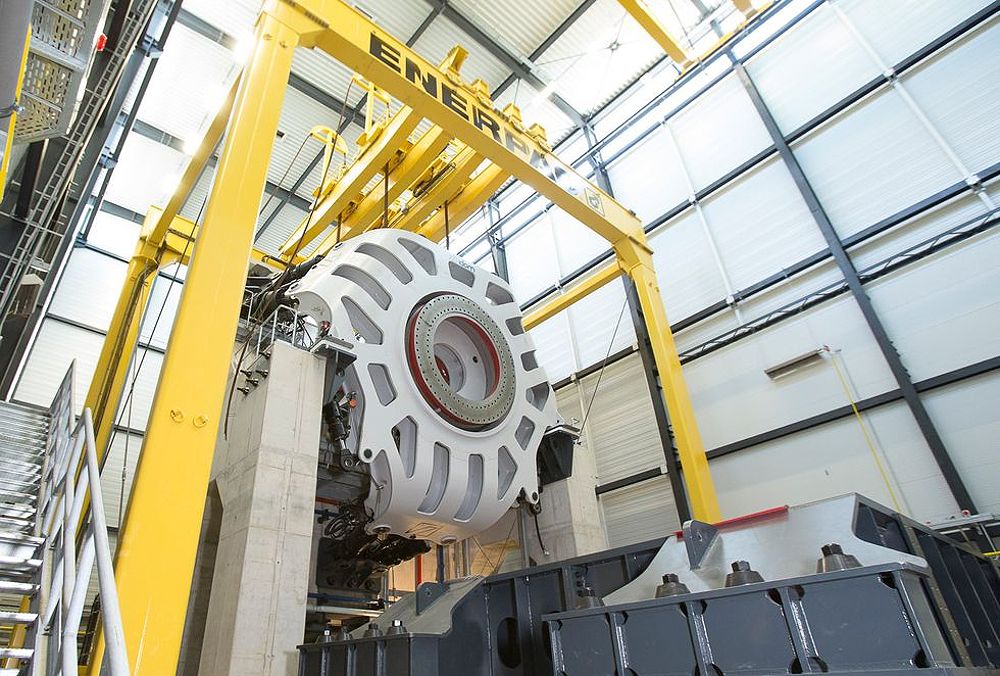Discover four efficient and rapid testing methods for wind turbines that expedite their integration into power grids and identify potential issues early on. These methods offer controlled variables, reproducible results, and the ability to simulate various grid conditions, reducing costs and accelerating the validation process for the wind energy industry.
Efficient Testing Methods for Wind Turbines: Accelerating Integration into Power Grids
Wind turbines are a crucial part of the push towards a more sustainable future. However, as the technology continues to evolve, there is a need for efficient and rapid testing of emerging turbine prototypes before they are connected to power grids. A recent study published in the IEEE Open Journal of Power Electronics by a research group in Germany outlines four methods for testing wind turbines to expedite their integration into the grid and identify any potential issues early on in the testing phase.
Traditionally, wind turbines have undergone extensive field testing to ensure their readiness for integration into a power grid. While this approach utilizes simple testing equipment, it is limited by its dependence on favorable wind and weather conditions, and the tests conducted are only partially reproducible. Florian Hans, a research associate with the Power Electronics and Grid Integration Group at the Fraunhofer Institute for Wind Energy Systems (IWES) in Germany, explains that field tests have their limitations and drawbacks.
To overcome these limitations, Hans and his colleagues at Fraunhofer IWES are developing new laboratory testing methods for wind turbines that offer controlled variables and reproducible results. This approach allows for shorter test campaigns and cost savings. Moreover, the controlled conditions of a laboratory enable the simulation of various grid conditions based on customer needs, such as changes in voltage, frequency, or grid strength.
Testing the Entire Turbine's Functionality in a Simulated Grid
The first method proposed by the researchers involves testing the entire turbine's functionality in a simulated grid, including its electrical and mechanical components and their interactions. To support this approach, Fraunhofer IWES is in the process of commissioning a new grid simulator called Mobil-Grid. This simulator will have the capacity to test a wide range of onshore and offshore turbines with up to 20 megawatts of power and voltages of 20, 33, or 66 kilovolts.
Nacelle Testing: Simulating Wind Fields, Rotor Blades, and the Electrical Grid
The second method, called nacelle testing, involves simulating wind fields, rotor blades, and the electrical grid. This allows researchers to simulate various wind and grid conditions. Fraunhofer IWES has been conducting this type of testing through its DyNaLab (Dynamic Nacelle Testing Laboratory) since 2015.
Analyzing Wind Turbine Subsystems and Individual Components
Additionally, the researchers are utilizing two test bench methods. One analyzes wind turbine subsystems, while the other analyzes individual components. The component-level test bench, called PQ4Wind, emulates all components except for the wind turbine's main frequency converter. This method offers flexibility and low installation effort without interference from other components.
Accelerating Wind Turbine Testing and Integration into Existing Grids
By combining these testing approaches, the researchers believe that wind turbine testing and integration into existing grids and wind farms can be accelerated. This would help identify any issues earlier in the process, before the turbines undergo their final field tests.
Currently, field testing to validate new wind turbine models typically occurs late in the development process, sometimes even after the turbines are commissioned. This can lead to additional costs and delays if errors are discovered late in the game. Therefore, approaches that expedite the validation process or enable testing at lower levels are highly desirable to the industry.
In conclusion, the development of efficient and rapid testing methods for wind turbines is crucial to ensure their successful integration into power grids. The approaches outlined by the researchers at Fraunhofer IWES offer controlled variables, reproducible results, and the ability to simulate various grid conditions. By catching any issues earlier in the testing phase, these methods can accelerate the validation process and reduce costs for the wind energy industry.


